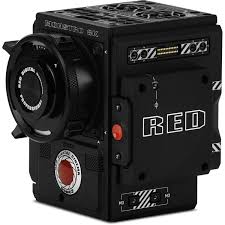A movie synopsis summarizes the film’s storyline. It covers all of the screenplay’s acts and highlights key plot points and emotional components. A synopsis also introduces the main characters and the movie’s setting.
There are many reasons to use a synopsis, including:
- To guide yourself during writing or to brainstorm an idea
- As selling tools to give to prospective producers, directors, or actors looking for new TV and movie projects
- To clarify the storyline of your screenplay or in a press kit for your movie
- To get the attention of a producer or a film festival
How Long Is a Synopsis?
On average, a movie synopsis is one to three pages long. Many screenwriters limit their synopses to 500 words.
As a general rule, movie synopses should be quick and easy to read. Make sure your synopsis takes no more than five minutes to read. A shorter synopsis might not make much of an impression, while a longer synopsis can cause readers to lose interest.
Tools Similar to a Synopsis
In addition to writing synopses, screenwriters often compose other elements to market their creations. Find out how a synopsis compares to a logline, a film treatment, and an outline.
Logline vs. Synopsis
A logline is an even more condensed summary of a screenplay. Most loglines include just one or two sentences and focus on the screenplay’s main conflict and emotional elements. A great logline should capture the interest of a filmmaker, producer, or viewer in seconds. A successful logline usually has these three elements:
- Protagonist: Introduce and describe the essence of the main character.
- Goal: Reveal the main character’s goal or the main objective of the screenplay.
- Conflict: Hint at the major obstacle that the main character must overcome.
Film Treatment vs. Synopsis
Unlike a concise logline, a film treatment tends to be much longer than a synopsis. Most film treatments are many pages long and include much more detail than a movie synopsis.
In addition, screenwriters typically write film treatments before the screenplay. Writing a film treatment can help you organize the story at the start of the writing process.
Outline vs. Synopsis
Most screenwriters also create an outline to assist with the writing process. In contrast to a synopsis, an outline serves as more of an organizational tool. Creating an outline can help you plot the action, put everything in order, and balance the narrative before you start writing the screenplay.
What Elements Make Up the Movie Synopsis?
When writing a movie synopsis, include these essential elements:
- Main Character: First, introduce and describe the protagonist. Explain some of their defining characteristics and briefly discuss why they’re the right person for the role.
- Primary Goal: Next, introduce the main character’s goal. This objective should be the key point that drives the plot forward.
- Major Conflict: After outlining the goal, discuss the main character’s biggest obstacle. This conflict could be another character, an event, an object, or an abstract concept.
- Stakes: Next, explain what the character is up against and what could happen if they fail. This part of the synopsis should get the audience fully invested in the storyline and the outcome.
- Key Turning Points: As the plot builds to the major conflict, most screenplays include one or more important turning points. Describe these to convey the flow of action.
- Conclusion: Finally, wrap up the synopsis by explaining how the story ends and the main character reaches a resolution.
What Are the Three Keys to a Great Story Synopsis?
To keep your movie synopsis as concise as possible, focus on these key aspects:
- Relevant Tone: Use the right tone for your synopsis. A synopsis for a comedy should make the reader laugh, while a horror movie should put the reader in suspense.
- Understandable Story: Make it as easy as possible to read and understand. Ensure that the reader gets the ideas the first time around without having to reread the synopsis.
- Memorable Concept: A notable synopsis tends to stick with readers who may be inspired to tell others about your screenplay.
How To Write a Synopsis as a Selling Tool
When you need to market your screenplay to movie or TV producers, it’s important to write a concise, compelling synopsis. That means it should be as tight as possible and take up no more than one page. Use a three-paragraph structure with one paragraph dedicated to each act of the screenplay.
1. Write the Logline
Start your movie synopsis with the logline, which is a sentence or two that summarizes the film’s concept. The logline should be as compelling as possible and hook the reader immediately. Essentially, the logline sells the synopsis, which, in turn, sells the movie.
2. Tell the Core Story
Next, tell the story succinctly without providing too many details. Share the main plot points, help the reader understand the protagonist’s motivations, and emphasize the main character’s emotional growth. Focus on engaging the reader’s imagination with strong visuals and an intriguing conflict.
3. Include Contact Details
Since there’s a good chance you’ll leave your synopsis with an executive or two, make sure it includes the information they need to reach you. Include your phone number, email address, and Writer’s Guild of America (WGA) registration number if applicable.
How To Write a Synopsis as a Story Tool
In most cases, the synopsis comes after the screenplay. Yet in some cases, you might find it helpful to compose a synopsis before or during the writing process. When you write in this order, the synopsis can help with storytelling.

Scene from “Ransom“
- Ignore content and formatting rules. In most cases, you’ll be the only reader, so you can make the synopsis as long or as short as necessary.
- Focus on the core idea and character development so you can tell the story effectively.
Movie Synopsis Writing Tips
When writing a movie synopsis, strive to tell the story in a compelling way instead of explaining every turn of events. Use these tips to make your movie synopsis as effective as possible:
- Write in the third person and in the present tense to convey action.
- Keep it succinct, and remove any unnecessary details to avoid overwhelming readers.
- Include dialog to hook readers, but do so sparingly.
- Note the beginning and end of each act to help readers understand the structure.
- Highlight the most important conflicts while keeping action-related details minimal.
- Summarize the character arcs and explain their motivations rather than their actions.
- Reflect the tone of the screenplay and amplify the emotions that the movie conveys.
- Include a concise ending for the plot and characters.
- Reveal all important elements of the movie and avoid hiding important plot points or major emotional aspects.
Movie Synopsis Template and Examples
Use this basic template below to write a synopsis for your film or screenplay.
[Production Company Name]
[Screenplay Title]
[Writer Name] | [Writer Phone Number] | [Writer Email] | [WGA Number]
Logline
[One- to two-sentence summary of your screenplay]
Synopsis
Act 1
[Introduction to the main characters, environment, and conflict]
Act 2
[Description of the rising action, the main conflict, and relevant character development]
Act 3
[Resolution of the main conflict and the character arcs]
Read and get inspiration from synopses of well-known movies like “The Incredibles” here:
You can learn more about writing a movie synopsis and find out how you can improve your skills by applying to the Nashville Film Institute here.














